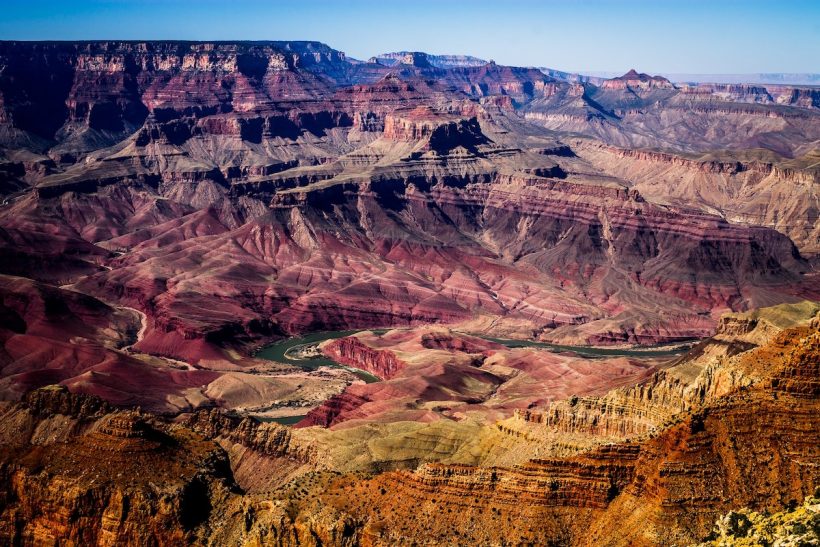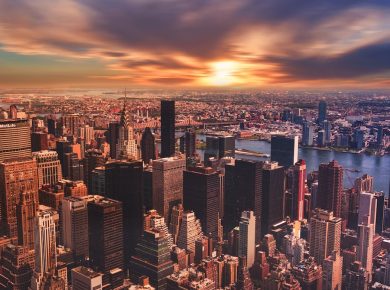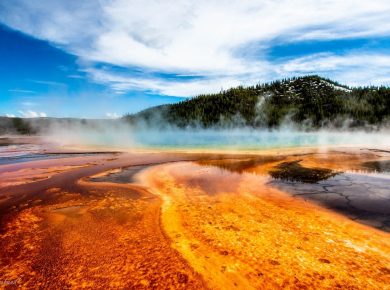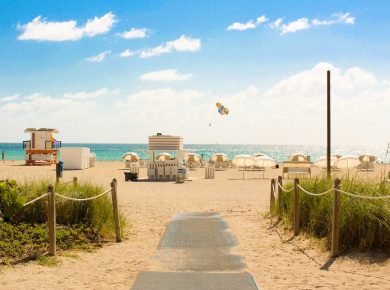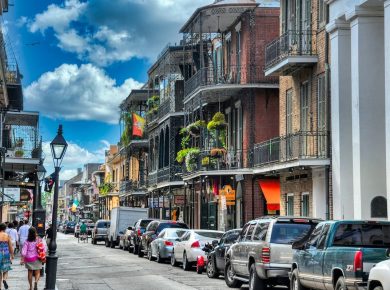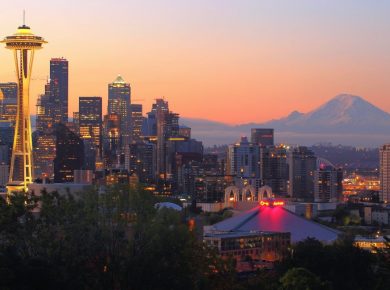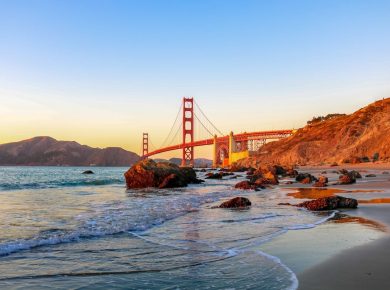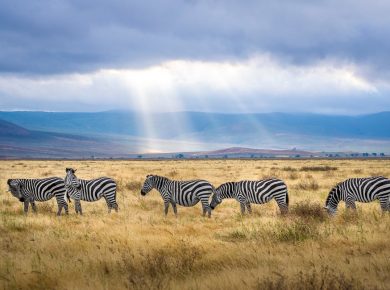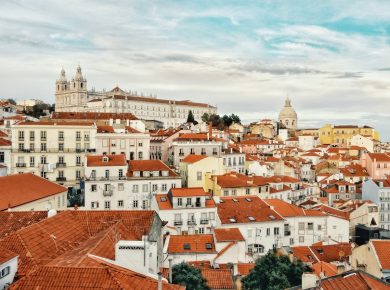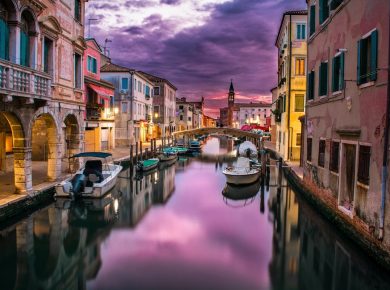The Grand Canyon is a “must see” on many people’s bucket list. The Grand Canyon is a huge canyon located in Northwestern Arizona. The Grand Canyon was carved out by the Colorado River over 6,000,000 years ago. The canyon is huge spanning over 10 miles across and over 277 miles in length. In some areas of the canyon, it is 6,000 feet deep.
The Grand Canyon is home to activities like hiking, helicopter tours, mountain biking and even rafting. For thousands of years native peoples lived in and around the canyon. The Grand Canyon can be extremely hot in some months and chilly in others. The Grand Canyon is popular from tourists all around the world since it is so large and has some magnificent rock formation and colors.
The best months to visit Grand Canyon between April and June, when the weather has not yet reached their blistering summer temperatures and precipitation averages are low. Visit in early June because the park becomes extremely crowded when school lets out in June.
So, when is the best time to visit possibly the world’s most popular canyon? Take a look below to find out.
Table of Contents
Average Temperature In Grand Canyon
You can expect four seasons in The Grand Canyon. The warm season in The Grand Canyon lasts for roughly 3 months and is from June to November. The high temperature is about 76° with a daily low on average of 50°.
The hottest month falls during this time which is July – where you can expect an average high temperature of over 85°. The cold season is the winter months where things get very chilly. November to March the high temperatures are 51°.
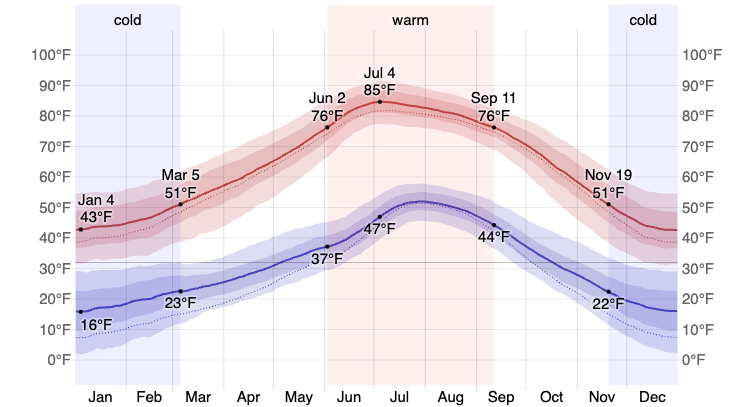
December is the coldest month in The Grand Canyon where the low is a brutal 17° and a high of 44°. The Spring months and Autumn months have around the same temperature with highs in the mid 50’s and lows in the 30’s to 40’s.
The Grand Canyon has various temperatures even during the season because the canyon influences the climate just on its own. Depending on the elevation can depend on how cold or warm it is.
The hottest part of The Grand Canyon is Phantom Ranch. Phantom Ranch is also one of the driest places in the canyon. Phantom Ranch is not too far from one of the coolest places in the canyon known as The North Rim.
The North Rim is 8,297 feet high and can be extremely wet. A rule of thumb is that for every 1,000 feet of elevation down you can find the temperature to increase by 5.5°F. You can find some of the higher temperature destinations at some of the lowest points in The Grand Canyon.
The Grand Canyon is cool most of the year and can be windy – so dressing appropriately and bringing jackets/ warm clothes is highly recommended. About 9 months out of the year has cloud coverage.
You can find the sunny months being the late summer months and early fall months from August to the beginning of November. September has the clearest skies with over 82% of the month being cloudless. Half of February is overcast with an average temperature of only 32° and a low of 20°.
Daily Chance Of Precipitation In Grand Canyon
Despite popular belief it does rain and even snow in The Grand Canyon! When most people think of The Grand Canyon they are thinking of the hot summers. The rainy season in The Grand Canyon is from July to September.
These wet months get an average of at least 0.04 inches of precipitation. August is the rainiest month at the canyon where it rains about 8 days out of the month. Precipitation is either rain or snow and in the winter months it falls as snow.
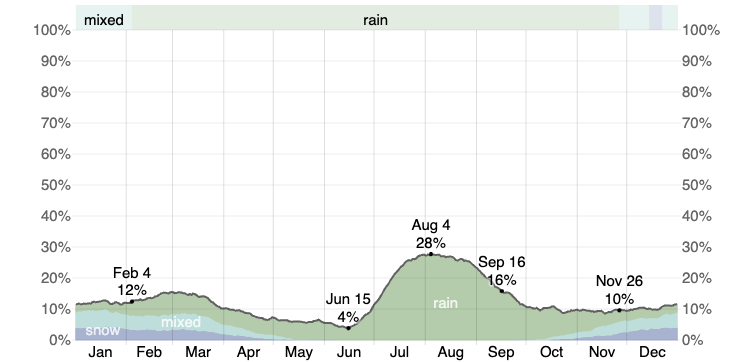
The Northern Rim of The Grand Canyon sees the most snow while Phantom Ranch sees less than 1 inch of snow on average annually. Visiting during the wet months can mean that you might run into lightning storms.
Clouds roll in by the mid to late afternoon and bring showers and storms. The air in the summer months can be extremely dry and lightening often causes fires. Sometimes the rain causes flash floods in the flat canyons – so if you are planning on hiking make sure that you follow the suggested campsites.
The months that receive the most snow are December and early February . You can expect to find at least one day that snows in these months. The snow on some of the higher elevated trails can freeze over and become icy due to the fact the temperature likely will not reach over 32°.
The snow is usually dried up before reaching the canyon floor and often sits on the rims and higher elevated places. The drier season last for nine months and is from February to November. You can still find snow in some parts of The Grand Canyon up until May when majority of the canyon becomes warm.
Humidity Comfort Levels In Grand Canyon
You will not find a lot of humidity in The Grand Canyon. The least humid month is June while December is the most humid with an average humidity percentage of 53% relative humidity. From June to December the humidity escalates until falling again in January and the cycle repeating annually.
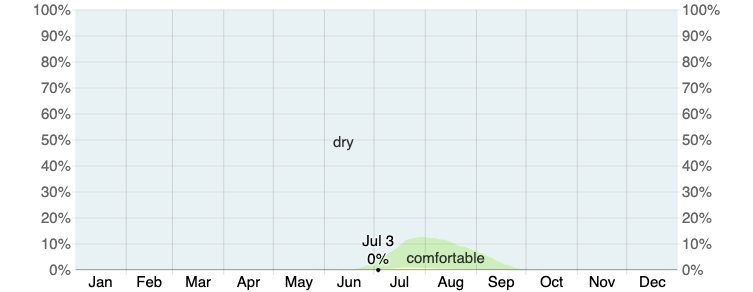
Best Time Of Year To Grand Canyon For Great Weather
The best time to visit The Grand Canyon for amazing weather is between the months of April and June. The rainfall is usually low, and the temperatures are moderate before getting too hot for the summer.
The temperature is usually in mid 70’s to high 80’s making it a comfortable temperature to go hiking or venture out to see the depths of the canyon. Early summer is the most ideal time to visit the canyon, but this is also when the most tourists are also there (more to come on this later in the article.)
The North Rim of the canyon tends to be cooler than other parts. Keep in mind that there are only two entrances to the canyon open year around. You can find good weather in some parts of the canyon year around, but it depends on if you like the weather chilly or hotter.
The good thing about visiting The Grand Canyon year around is that many of the excursions and activities aren’t seasonal so you get to enjoy them no matter what the weather looks like.
Best Time Of Year To Visit Grand Canyon For Low Prices
You can always find a deal if you look for one even during the peak season. The best time to find the best deal is during the off season. The off season for the canyon is between November and February.
The reason for this is because these months get snow and are the chilliest months with some of the temperatures not going below freezing. Visiting during these months often have the lowest prices in accommodations and flights.
Most people visiting The Grand Canyon fly into Phoenix Sky Harbor Airport which is about a 3.5-hour drive. You can also fly into The Grand Canyon on private helicopter tourist that will start around 1,000 for two people.
Flying to Phoenix and driving during these months will save you a ton. You also won’t have to wait in lines or worry about accommodations being outrageous. Most people prefer to visit when kids are out of school and the weather is warmer. People call visiting during these months the secret season. The skies are typically clearer, and crowds are few.
When Is The Peak Travel Season In Grand Canyon?
Traveling anywhere during the peak season isn’t advised unless you like high prices and long lines. While visiting the canyon during the peak season might seem ideal because it is the summer months you can expect to spend significantly more.
Temperatures during peak season range from 40° to 90°. The wind is at its highest during the summer months, so the hot days don’t seem as bad with that cool canyon breeze. Visiting during the peak season means you have to plan your flights and accommodations out months in advance.
If you are planning on staying onsite in a campground, be sure to make a reservation because they fill up quick and you could potentially have to go miles outside of the canyon for a place to park up.
One pro of staying during the busy summer months is that everything is open and functioning at 100% capacity. Rainstorms – mini monsoons – happen in summer but are typically short lived.
Visiting during the summer months are a less than ideal time to hike because it is hot and wet – though this is when you will find the most people doing so. Visiting the canyon during the summer months also have a lot of festivals and events.
The summer months also has an extremely high UV index and people often get sunburnt quickly so pack a fair amount of sunscreen.
When Is The Shoulder Travel Season In Grand Canyon?
The Grand Canyons shoulder season falls between the seasons of spring and fall. Visiting during March to early June and October to November means you will encounter moderate temperatures.
This is great if you want to go on long hikes. The average temperature is between 50° and the high 80’s on the west rim and between 50-60 on the southern rim. There are obviously significantly less people during this time due to work/school restrictions and there is less rain.
The rainy season comes after spring and before fall in the summer months in the canyon. A couple cons of visiting during these seasons is that if you are planning on exploring the whole canyon the northern rim might be inaccessible due to snow.
These months can often be unpredictable with the weather as well so being flexible during these months are essential. Camping can be difficult during spring and fall because it gets extremely cold at night – temperatures sometimes dip into the low 20°s.
The nicer time to visit out of the two shoulder seasons is autumn due to some of the most beautiful foliage to be seen. There are several events happening during shoulder season such as The Grand Canyon Star Party, Fourth of July event and The Grand Canyon Music Festival.
When Is The Low Travel Season In Grand Canyon?
The off season is the winter months. Visiting The Grand Canyon during the winter months has some pros like very few tourists. It is easy to book accommodations during these months due to fewer people.
Since the closest major airport is 3.5 hours away you can find cheaper rental cars and flights. Visiting during these times means that some activities might be closed seasonally such as whitewater rafting.
Winter weather sometimes closes down trails and obstructs views. The North Rim of the Grand Canyon is often closed during the winter months because it can receive almost 150 inches of snow!
Depending on what you are looking for it can be the opposite if you want to see a beautiful snow-covered Grand Canyon in the areas still accessible to guests. Visiting during these times can mean extremely frigid temperatures during the daytime.
Be sure to pack accordingly. There are still events to enjoy while visiting during winter such as the celebration of art which lasts from September until January.
Best Months To Travel To Grand Canyon
The Grand Canyon experiences a variety of temperatures, along with fluctuating seasons. The time that you will run into the most sightseers and highest prices are during the summer months.
Summer months bring rain and lightning storms with little available accommodations and lines for cars and expensive flights. Summer months have an average temperatures of mid 80s and up.
Winter months in The Grand Canyon bring cold temperatures with many days not reaching above freezing and some parts of the canyon being closed to the public altogether because its too dangerous with the amount of snow received.
The happy medium is visiting during the shoulder season with moderate temperatures, fewer crowds and many activities being open. The Grand Canyon is sure to have something to excite for the entire family no matter what time of year you visit.
